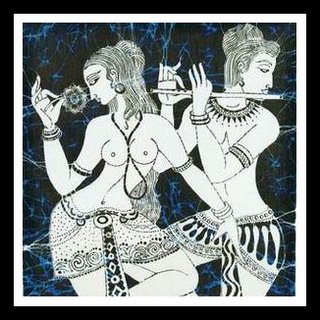 Love comes in to one's life, uninvited.
Love comes in to one's life, uninvited."In ancient Sri Lanka, parents usually arranged marriages of their children. But marriages based on love affairs were also not unknown... The pages of chronicles and literature are diffused with the stories of young lovers getting married without parental intervention. Some of these unions, such as those of Unmaada Citra and Diigha Gaamini, Pandukaabhya and Svarnapaali, Kaakavannatissa and Viharamaha Devi and Saliya - Asokamala have become immortal both in our traditions and written history.
"The Saliya – Asokamala love story is one of the most beautiful and sublime stories in the world. In this story, the culmination of this love affair speaks not only one of the strengths of the couple's attachment to each other, but also the magnanimity and rare greatness of the kingly father who granted permission for the union to take place. If the story of Dutthagaamini's marriage with the cultivator's daughter is authentic, his son Saaliya's affair was the third love marriage in three successive generations."
Saaliya had to give-up the right to the throne - that's the price he paid for his love. But, as we know, some royals and the people of the higher castes could get away with murder. It was "okay" for them break the norms of the society. Did the average man and woman have the same privilege?
"...like the lotus leaf to which drops of water cannot adhere, her mind does not adhere to no one except her lord. They, whose love for each other was immense, passed their entire youthful days like gold and quicksilver."
...writes Ven. Thotagamuve Sri Rahula in Kavyasekharaya describing a young couple in love. Looking back, we still have the evidence to show the grande status of the ancient Lankan civilisation. It was a far more "developed" society - people had a good life and extra time in their hands for indulgence. There were parks and entertainment. There was music and dance. Love must have flourished in abundance. The kind of parties king Kaasyapa must have thrown on top of the Sigiriya fortress would have been second to none, even in hollywood standards.
"The Mahavamsa has many examples to show that caste was not always the primary requirement in selecting a marriage partner. Nor did race play any insurmountable barrier to marriage. Several kings had their consorts from other races. Candamukha Siva (43 - 52 A.C.) and Mahaanaama (406 - 428 A.C.) had Tamil queens while Mahinda III (801 - 804 A.C.) and Vijayabaahu I (1055 - 1110 A.C.) married Kaalinga princesses. Vijayabaahu I married a Kaalinga princess particularly because she was a beauty with a majestic appearance and a delicate disposition.
"Other than the princesses of Royal birth, even girls from less august heritage enjoyed the privilege of marrying young men of their choice. According to a story in Rasavaahini, a young woman called Hema fell in love at first sight with a merchant and married him. Another maiden named Sumana married a counselor of king Dutthagaamini on her own accord. Commentaries state that a certain young woman hopelessly desired a monk. As the bhikku spurned her love, the lovelorn damsel became so inconsolable that she refused to take any food and died of starvation..."
Some gave up their kingdoms, some gave up their possessions, some sacrificed their lives for love. Love is blind. It has been, even then.
Source: Sri Lankan Women in Antiquity - Prof. Indrani Munasinghe
enjoyed reading this. thanks :-)
ReplyDeleteLove the post!!
ReplyDeleteThis is a really nice post & I enjoyed reading it
ReplyDelete